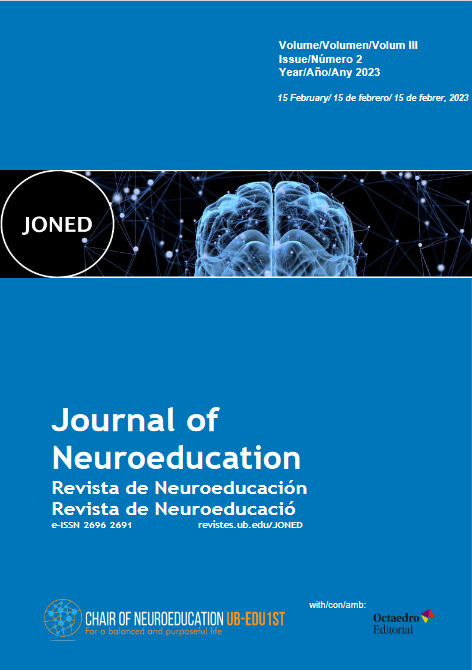Capacidades y dificultades del alumnado con TEA del municipio de Vinhais
una propuesta de intervención neuroeducativa, basada en la educación (socio)emocional
DOI:
https://doi.org/10.1344/joned.v3i2.40932Keywords:
neuroeducation, social and emotional learning, autism spectrum disorder, SDQ, emotional competence, neuroeducational interventionAbstract
Autism Spectrum Disorder (ASD) is included in the group of Neurodevelopmental Disorders and is characterized by persistent deficits in social interaction and communication, and restricted and repetitive patterns of behavior, interests, or activities. Individuals with this diagnosis face difficulties in their academic performance and social integration daily, due to behavioral problems and socio-emotional difficulties. Nowadays, it is known that these difficulties have a neurobiological basis, anchored in anatomical and functional alterations in the brain. Thus, and considering the contributions from neuroeducation, the SDQ-Por was applied to a group of portuguese students with ASD to determine their strengths and difficulties. The results of the questionnaires indicate difficulties, especially, in the emotional component, hyperactivity, and problems with peers. To overcome these difficulties, an intervention program based on the promotion of socio-emotional skills was designed. The intervention based on neuroscience provides, therefore, an innovative method to improve the education of people with ASD. In addition, the validation of the program by experts shows the value of including these programs in the school curricula of students diagnosed with ASD.
Downloads
Downloads
Published
Issue
Section
License
Copyright (c) 2023 Carlos Gomes Fontoura

This work is licensed under a Creative Commons Attribution-NonCommercial 4.0 International License.
The authors who publish in this journal agree to the following terms:
a. Authors retain copyright and grant the journal the right of first publication
b. Texts will be published under a Creative Commons Attribution Non Commercial License that allows others to share the work, provided they include an acknowledgement of the work’s authorship, its initial publication in this journal and the terms of the license, and not for commercial use.



